When I am importing my maven project in my eclipse, I am getting this error:
Plugin execution not covered by lifecycle configuration: org.codehaus.mojo:buildnumber-maven-plugin:1.0:create-timestamp (execution: generate-build-number, phase: generate-sources) pom.xml /DataClient line 6 Maven Project
Does anyone know how to fix this problem? I tried several other ways which was listed in SO questions but it didn't worked.
I am using eclipse kepler and I do have pluginManagement as well in my pom.xml file.
My pom.xml snippet where I am using plugins:
<build>
<pluginManagement>
<plugins>
<plugin>
<artifactId>maven-surefire-plugin</artifactId>
<configuration>
<argLine>-javaagent:"${settings.localRepository}"/com/googlecode/jmockit/jmockit/1.7/jmockit-1.7.jar</argLine>
</configuration>
</plugin>
<plugin>
<groupId>org.codehaus.mojo</groupId>
<artifactId>cobertura-maven-plugin</artifactId>
<configuration>
<instrumentation>
<excludes>
<exclude>**/test/**/*.class</exclude>
</excludes>
</instrumentation>
<formats>
<format>xml</format>
<format>html</format>
</formats>
</configuration>
</plugin>
<plugin>
<artifactId>maven-javadoc-plugin</artifactId>
<version>2.9.1</version>
<configuration>
<author>false</author>
<keywords>true</keywords>
<show>public</show>
<links>
<link>http://docs.guava-libraries.googlecode.com/git-history/v16.0/javadoc/</link>
<link>http://netty.io/4.0/api/</link>
</links>
<doctitle>Data Client API (${project.version})</doctitle>
<windowtitle>Data Client API (${project.version})</windowtitle>
<groups>
<group>
<title>Core API</title>
<packages>com.host.grads.client:com.host.grads.client.resources</packages>
</group>
<group>
<title>Miscellaneous</title>
<packages>com.host.grads.client.utils</packages>
</group>
</groups>
</configuration>
<executions>
<execution>
<id>attach-javadocs</id>
<goals>
<goal>jar</goal>
</goals>
</execution>
</executions>
</plugin>
</plugins>
</pluginManagement>
</build>
 .
.